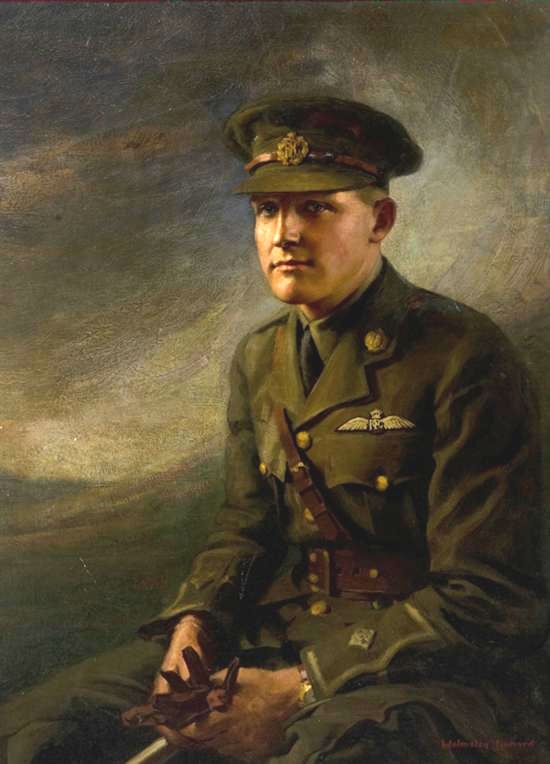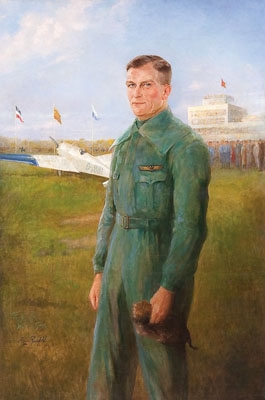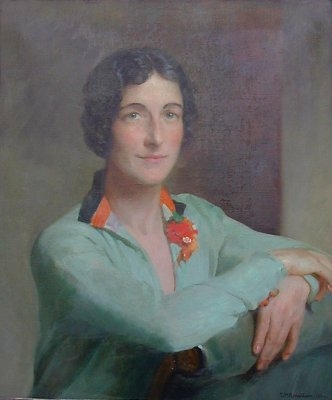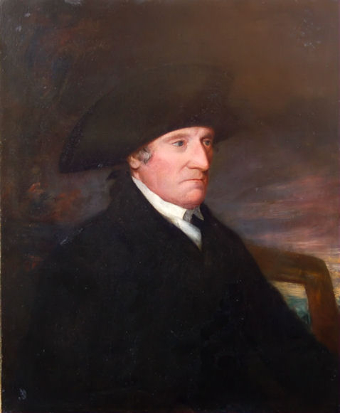Reprinted by permission of the Mt. Airy Times Express
The Final Journey of Mortimer Park Crane
by
David T. Moore
I first encountered Mortimer Park Crane?s name when researching the history of Lovett Memorial Library about two decades ago. Of the 34 men and one woman from Mt. Airy who lost their lives in the ?Great War? and were memorialized on the plaque affixed to the boulder in Lovett Park - until it was stolen in the 1970s - Crane was the only officer. About 2001, when I was librarian at Germantown Historical Society and received an inquiry as to his Philadelphia resting place, I hadn?t a clue. I always kept the question in mind, however, and some time ago I happened on the Web site [this site''s predecessor]. I started my Crane investigation in earnest.
On 30 November 1921 the White Star liner Haverford dropped anchor in Philadelphia. While her passenger manifest survives (27 citizens and 227 aliens were on board), the freight manifest is lost. From funeral home records, however, we know that in her hold she carried the mortal remains of Mortimer Park Crane.
Mortimer Park Crane was born in Philadelphia on 4 February 1894, the only child of Theron Insco Crane and Charlotte Augusta (West) Crane, residing on West Upsal Street. Theron was born in Indianapolis, fourth of the five children of Alexander G. Crane and Mary (Park) Crane. The son of a Brooklyn farmer and printer, Uzal A. Crane, Alexander Crane had pushed west to Indiana, where he was enumerated in the 1860 census as a clerk, perhaps in the agricultural store operated by his father-in-law. By 1870, he had returned his family to Brooklyn and was an oil dealer. As examples of Theron?s youthful activities, in early 1878 he was listed as the vice-president of ?The Brooklyn Debating Society of the Nineteenth Ward,? in the 1880 census he was recorded as a clerk in an office, and on 23 December 1885 he was one of the ?Reception Committee? for a holiday party at Brooklyn?s Brevoort Club. In 1888 and 1889 the Brooklyn Directories listed him as living at 12 Fort Greene Place and being a clerk. Perhaps he even worked for his uncle, Uzal O. Crane, at U.O. Crane & Company, Iron, located at 74 Wall Street. Theron?s future bride, Charlotte, was born 10 February 1867 in Brooklyn, youngest of the five children of Charles M. West and Lydia (Holmes) West. Charles and Lydia were born in New Jersey of New Jersey-born parents; their eldest was born there and the rest in Brooklyn, where Charles engaged in the dry goods business. The Cranes married about 1889.
Mortimer was baptized on 1 July 1894 at Christ Episcopal Church, McCallum and Tulpehocken Streets (known after a 1933 merger as Christ Church & St. Michael?s), by the Rector, Rev. John Blake Falkner, with the parents as sponsors. He may have been named for his maternal grandfather; as he had a cousin named Charles Mortimer West, ?Mortimer? may have been their grandfather?s middle name as well. ?Park? was for his paternal grandmother?s family.
Theron had come to Philadelphia in 1890, entering into a partnership with Philadelphia-born William Stockman Pilling in a business called ?Pilling & Crane Company,? merchants in ?iron, steel, ores, coal and coke.? An 1872 graduate of Central High School, Pilling in the 1880s was ?treasurer, general manager and active head? of ?the oldest manufacturer of merchant pig iron? in the country, the Crane Iron Company, which had no connection with Theron?s family. After Pilling died in 1945, his home, 229 West Upsal Street, was demolished and Pelham Park Apartments erected there. The partners and their company were closely connected to Thomas A. Edison; for example, they ?handled outside sales for Edison?s ore business? and ?sold coal to the New Jersey and Pennsylvania Concentrating Works,? an Edison operation. Crane later was secretary of the Edison Portland Cement Company, and Pilling was treasurer. Once, in April 1901, hearing that the inventor was unwell, Crane shipped two bottles of medicine to Edison?s headquarters in West Orange, New Jersey. Edison?s associate Walter Seeley Mallory replied that he had ?delivered them personally to Mrs. Edison, who said that she would have Mr. Edison take them,? but that Edison was ?very much better? and ?is in very good spirits and says he has no trouble with his stomach.?
Theron was ingenious, reportedly improving the removal of impurities from zinc ore. And, on 14 May 1907 he and Prosper Auguste Maignen received patent #853,559, ?Method of Desiccating Air? (that is, a way to use ?such a hygroscopic substance as powdered lime? to absorb moisture from air, then [coke] filters to remove the lime, thus leaving perfectly dry air for ?various manufacturing operations where desiccated air is desired, as in smelting iron, drying grain, and the like?).
By the time Mortimer was about three, the Cranes had relocated from 133 West Upsal Street to 352 Pelham Road, a house Theron had commissioned the architectural firm of Hazlehurst & Huckle to design. In 1913 the Cranes briefly lived at 229 West Walnut Lane. About 1914 the family moved to 6440 Greene Street, erected in 1885 for A. Heywood Mason. In 1929 that four acre property was sold to the Archdiocese of Philadelphia for St. Madeleine Sophie parish at a purchase cost of $149,726.22, and the Crane residence remains the parish rectory to this day. Having placed most of their home?s furnishings and library collection up for auction in June, 1929, Theron and Charlotte took up residence in Room 1210 of the Bellevue-Stratford Hotel, where he died on 2 November 1929 (leaving an estate in excess of $4 million, mostly in federal, state and municipal bonds) and she on 12 December 1938.
Mortimer Crane?s educational record was spotty. He had private tutoring, and he attended the Hill School in Pottstown, Montgomery County, from 1908 to 1912, where he studied English, Latin, French, German, Algebra and History. However, his work was not of sufficient quality for admission to Yale, so a year of extra study was arranged at Lawrenceville School in Mercer County, New Jersey. Alfred Grosvenor Rolfe of the Hill School faculty reported of Mortimer that ?the scanty results of his study are due to a lack of concentration,? while Theron noted in a letter to Dr. Simon John McPherson, Lawrenceville headmaster, that ?Mortimer?s ground-work was rather poor at Hill, owing perhaps to a number of illnesses, which from time to time interfered with his work.?
Nicknamed, inevitably, ?Ichabod,? Mortimer appears to have initially felt somewhat uncomfortable in his new school, although he did play some football and ran track in pursuit of an athletic ?L,? while he also sang bass with the choir, glee club and ?double quartette.? Although Dr. McPherson did report after a few months that he had ?learned to respect Mortimer for his character,? academically Mortimer continued to require constant pressure from both his headmaster and his father, along with extra tutoring. In the end, notwithstanding Dr. McPherson?s belief that Mortimer was ?really not ready for Yale? and, if admitted, might ?flunk out? because ?his rate of progress is slower, apparently, than that of the average boy,? Mortimer took final entrance examinations for Yale in the fall of 1913. He did quite well, passing six of seven subjects and ?nearly? passing ancient history. ?While much gratified, I confess to having been surprised at such a result, and it is evident that his preparatory work was more advanced that we had reason to believe,? was how Theron expressed it to Dr. McPherson with obvious astonishment. Entering Yale?s class of 1917, Mortimer was known as ?Mort? and, of course, nicknamed ?Ichabod.? But he was gone from Yale after two years, spent a year at Lafayette College in Easton, PA, another at the University of Virginia, then went to work for one of his father?s companies, the Northern Ore Company, which Pilling & Crane operated in the zinc-mining area of Edwards, the terminus of a spur of the New York Central and Hudson R.R. in St. Lawrence County, New York.
What inspired his military decisions may never be known. We do know that before the United States entered World War I a fierce propaganda campaign took place in the United States between advocates for Britain and advocates for Germany. Among the pamphlets collected at that time by Hampton L. Carson of the Historical Society of Pennsylvania is one written in 1917 by R. Wherry Anderson titled ?The Romance of air-fighting.? And romance is indeed depicted: the epitome of young British manhood exhibiting skill, daring, bravery, and an almost chivalrous regard for opponents. The invitation to Americans was clear, and many young men accepted it even after the United States entered the war. One newspaper later reported that Mortimer had been ?filled with patriotic enthusiasm,? enlisting ?soon after a state of war was declared by the United States,? while another noted that he had volunteered for U.S. military service but, seeking quicker assignment to the front, received a discharge in order to fly with the Canadians and British. So, Mortimer crossed into Canada and joined the Royal Flying Corps (predecessor of the Royal Air Force) at Toronto, where his training was led by Lord Alistair Innes-Kerr and Vernon Castle. Castle, born Vernon Castle Blythe in Norwich, England, in 1887, had entered the theatre in America, dropping his last name. In 1911, he married Irene Foote, born in New Rochelle, New York, in 1893. Dancing together in Paris, New York and around the country, they became one of the most famous acts of the day. But when war broke out, Castle, always a British subject, felt compelled to return home. He joined the Royal Flying Corps and flew 150 missions over France. Surviving so much airtime at the front, he was assigned presumably safer training duty, where his path and Mortimer?s crossed. In late 1917, Castle transferred from Toronto to do training in Fort Worth, Texas. Mortimer followed him early in December but returned to Toronto by Christmas. In January 1918, he was commissioned and sailed for England. In an incident eerily presaging his pupil?s fate, Castle was killed during a training mission on 15 February 1918 when a student?s plane collided with his. [For movie buffs: Irene?s memoir, Castles in the Air, became the basis for the 1939 RKO musical The Story of Vernon and Irene Castle, starring Fred Astaire and Ginger Rogers.]
Mortimer, meanwhile, had been assigned to the Central Flying School in Upavon, Wiltshire, the oldest aviation school in England, established in the spring of 1912 on 425 acres of Upavon Down. His unit patrolled the British skies, and only a shortage of equipment prevented the well-thought-of American from being sent to the front. At last, by May, all was in readiness. Mortimer, praised by his squadron?s commandant for ?splendid keenness in his work,? was promoted to First Lieutenant and ordered to France. But during a maneuver on 15 May 1918 the plane to his left clipped his, tearing away the bottom wing on that side. A Court of Inquiry decided that ?the cause of the accident was in our opinion due to an error of judgement on the part of the pilot Lieut. M. P. Crane in the fact that he turned and ran into Lieut L. J. Cox from underneath while flying in formation.? Mortimer?s plane crashed to earth near Amesbury, Wiltshire, on the River Avon, and he died instantly of a fractured neck.
Charlotte received the news on 17 May ?in a cablegram of condolence from intimate friends of the family? who lived in London. Theron was immediately summoned back from a business trip to St. Lawrence County ?and on his arrival found a cablegram from Brown, Shipley & Co., London, Lieutenant Crane?s bankers? who offered to ?care for the body and arrange for its shipment? home for burial. However, for reasons not now known, Mortimer?s remains were interred in the churchyard of St. Michael and All Angels Church, North Otterington, in Yorkshire?s North Riding. Why he was buried so far from where he was stationed and died also remains a mystery, but, as he was in the plot of the family of Benjamin Talbot, credited with ?the construction of the first furnaces for continuous steel production,? in 1899 in Pennsylvania, there is a possible connection with Theron Crane.
By May 1921, when Theron Crane purchased Lot 13, Everglades Section, West Laurel Hill Cemetery, and contracted with a New York company for the erection of a mausoleum, plans were underway for Mortimer?s return. The mausoleum is a pilastered stone structure with ?Crane? carved over windowed iron doors. Opposite the doors is an opalescent stained glass window, executed in the Tiffany style, situated to catch the morning sun. The window shows a standing angel holding, in both hands and parallel to the ground, a sheathed sword from which descend palm fronds (a symbol of martyrdom, that is, victory over death). The bottom of the window depicts a scroll reading ??Thine, O Lord, Is The Victory.??
In due course, Mortimer?s remains were disinterred from North Otterington (a stone there still tells the story), and placed aboard the Haverford, which sailed from Liverpool on 16 November 1921. Interestingly, the ship, constructed in 1901 by John Brown and Company, Ltd., in Glasgow, had served as a troop carrier during the war and survived two torpedo attacks. The first troops to return directly to Philadelphia were transported on the Haverford, landing on 30 January 1919.
Upon arrival in Philadelphia, Mortimer?s casket was taken to the Oliver H. Bair Funeral Home, 1820 Chestnut Street, covered with a British flag, and an American flag placed next to it. On 2 December family and friends assembled. We have no record of precisely what transpired either at the funeral home or the cemetery. Present were both Rev. Charles Henry Arndt, who had succeeded his father-in-law, Rev. Falkner, as Rector of Germantown?s Christ Church, and Rev. Dr. David M. Steele, Rector of St. Luke & The Epiphany Episcopal Church at 13th and Spruce Streets. After whatever final words may have been said at the cemetery, the flag was removed, the casket slid into the upper crypt to the left, and the tablet immediately replaced. It reads: Mortimer Park Crane/Lieutenant Royal Air Force/1894-1918/?Greater Love Hath No Man Than This/That A Man Lay Down His Life For His Friends.? The iron doors closed. The mourners dispersed. Mortimer Park Crane was home at last.
This research has required the assistance and facilities of the following repositories and individuals: Germantown Historical Society; Genealogical Society of Pennsylvania; Historical Society of Pennsylvania; National Archives Mid-Atlantic Branch; Philadelphia City Archives and Register of Wills Archives; Temple University Urban Archives; The Free Library of Philadelphia?s Newspaper, Government Publications and Social Science & History Departments and its Map Collection; The Chemical Heritage Foundation; Christine Connolly (Yale University Archives); William L. Cooper (Samuel T. Freeman & Company, Auctioneers); Joseph Direso (West Laurel Hill Cemetery); Jacqueline Haun (Lawrenceville School Archives); Thomas E. Jeffrey (Edison Papers Project, Rutgers University); Mark J. Kidd (Majeki?s Stained Glass Works); Evelyn Lynn (The Hill School); Rev. Jean Mather (Christ Church & St. Michael?s); Irvin A. Miller; Rev. Leo P. Oswald (St. Madeleine Sophie Church); Brian Pohanka; Helene Weis (Willet Stained Glass Studios); and the geniuses who daily give life to the terms ?Internet,? ?World Wide Web? and ?Google.?
David T. Moore is a Mt. Airy historian and genealogist.
Reprinted by permission of the Mt. Airy Times Express
Antiques.co.uk Ref: XM4AKUPE
- Materials:
- Oil on Canvas
- Width (cm):
- 38 x 28 in.












